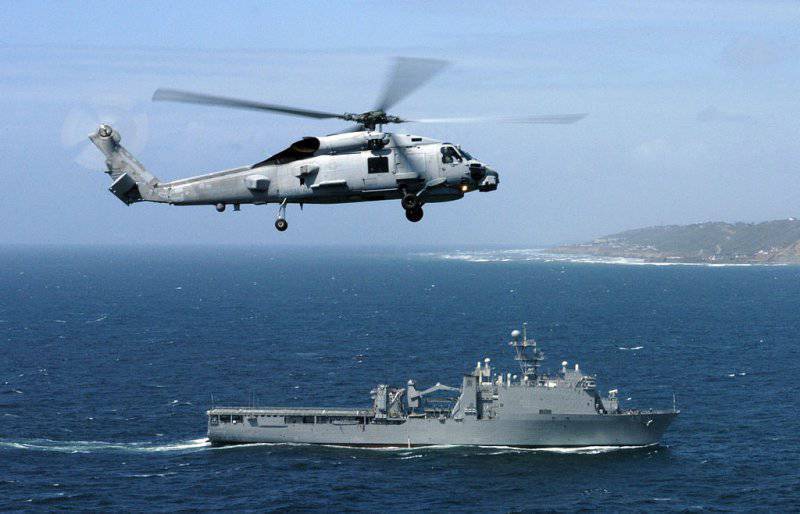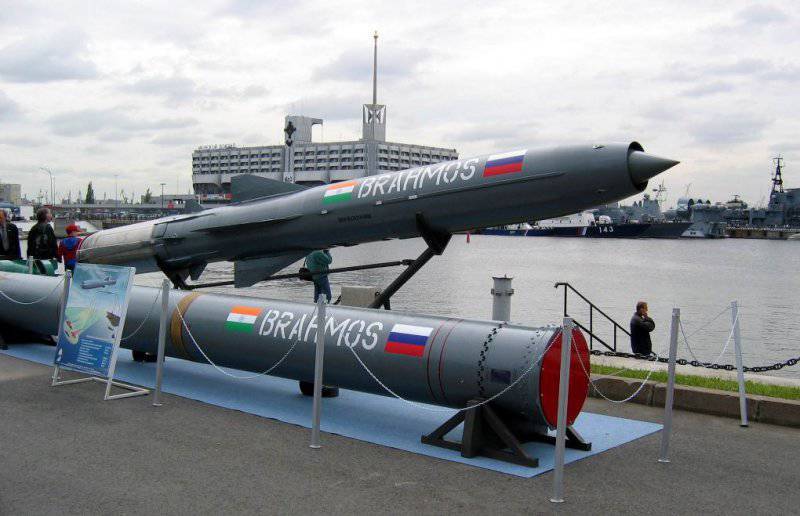US develops EW system
The beginning of the development of the AOEW (Advance Off-board Electronic Warfare) complex was announced in mid-April of this year. The command of the US Navy wants to get a new EW system designed to be installed on existing deck helicopters and capable of suppressing enemy radio channels and interfering with the operation of its radio electronic equipment. According to official data, the helicopter MH-60R or MH-60S is supposed to be used as the carrier of the new system, and its main task will be to counter enemy controlled weapons.
Unfortunately, the basic requirements for the prospective system, as well as its intended appearance, have not yet been announced. Detailed information on the requirements of the US Navy is classified and transmitted only to companies and organizations that have expressed a desire to participate in the competition. Which companies received a package of secret documents is unknown.
As far as is known, in the past few months, the relevant management of the US Navy received a number of requests and sent out the necessary information. Tentatively, until the end of autumn, the companies participating in the tender were to submit their proposals. The AOEW project developer was supposed to be identified at the beginning of November, but so far the winner of the competition has not been officially announced.
Based on fragmentary data, you can try to determine the approximate appearance of the promising EW AOEW complex, as well as present the main prerequisites for the beginning of its development. There is reason to believe that the AOEW system will be made in the form of a container suitable for installation on various aircraft. Initially, its carrier will be helicopters available in the naval forces, and then, probably, airplanes and prospective unmanned aerial vehicles will be used as such.
Taking into account the proposed tasks, it can be argued that the main purpose of the AOEW system will be to counteract the operation of the radar homing heads of various anti-ship missiles. Ammunition of this class in most cases equipped with radar homing, providing accurate guidance to surface targets. Due to interference, AOEW systems installed on helicopters must “blind” the missiles' homing missiles and thereby disrupt the attack.
In the foreign press, suggestions are made about the reasons for starting the development of the AOEW complex. It is quite possible that American specialists have to start developing a new electronic warfare system due to the recent successes of the Russian and foreign defense industry. There are several types of modern high-performance anti-ship missiles in Russia and a number of other countries. It is the presence of such missiles may be one of the reasons for the start of the development of promising EW tools.
In the context of the AOEW system, the Russian anti-ship missile P-800 "Onyx" and its export version called "Yakhont" are sometimes mentioned. This rocket can be used as a weapon for coastal complexes, surface ships and submarines. Depending on the flight path, the P-800 rocket can accelerate to a speed of about 750 m / s and fly to a range of about 300 km. The missile delivers a warhead to the 300-kg target. The missile’s flight to the target area is carried out using an inertial guidance system, and an active-passive radar seeker is responsible for finding and destroying the target.
The further development of the Onyx rocket is the BrahMos product developed by Russian and Indian specialists. By its basic characteristics, this rocket is similar to the base P-800 and differs from it primarily from a technological point of view. Since the beginning of the two thousandth rocket "BrahMos" operated by the armed forces of India. A new anti-ship missile with even higher performance is currently under development.
The high speed and long range of the “Onyx” or “BrahMos” missiles, as well as the peculiarities of the homing head and the great power of the warhead seriously hamper their interception. All existing shipboard anti-aircraft systems have limitations on the maximum speed of the intercepted target and on the radius of action. In addition, the scale of a massive missile strike may exceed the capabilities of defense systems, with the result that some of the missiles will be shot down, but some will be able to break through to the target.
Thus, for effective protection against enemy anti-ship missiles, a ship must have not only anti-aircraft systems, but also electronic warfare equipment. Modern ships of leading countries carry similar equipment, which makes it difficult to detect and attack them. The AOEW complex is proposed to be mounted not on ships, but on helicopters. Probably, this way of using the system is proposed to expand the capabilities of its own ship systems.
A helicopter capable of operating at some distance from the base ship will improve the effectiveness of the combat use of the EW system. If necessary, the helicopter or helicopters will be able to carry out jamming, being at a certain distance from the ship and covering the dangerous direction. In this case, the protected ship or compound will have some time left in case the AOEW helicopter complex fails to interrupt the attack of all launched missiles.
In early November, it was planned to complete the analysis of the proposals received from the competing companies. Most likely, the US Navy has already made its choice, but has not yet announced its decision. Who exactly will be engaged in the development of a promising complex of electronic warfare - will be announced later.
On the materials of the sites:
http://militaryaerospace.com/
https://fbo.gov/
http://janes.com/


Information